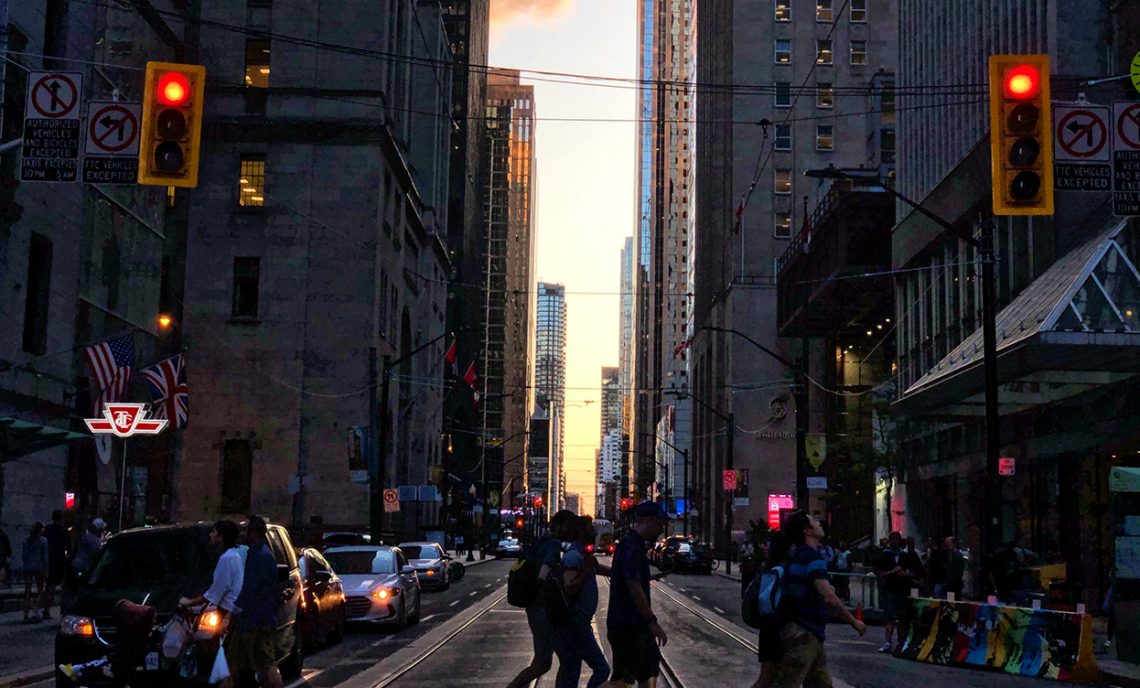
The recent surge in energy prices amid shortages particularly in areas of Europe and China, coupled with ongoing supply chain disruptions, have refuelled the debate around the likely persistence of the inflationary pressures currently being experienced around the globe.
For many of us, this issue is a relatively unusual environment. In looking back over time both here and overseas, if you’re under 50 years old and have lived in developed markets, it’s very likely you haven’t experienced much in the way of inflation. If you’re under 60, you likely have not experienced high, disruptive inflation.
The debate has two primary sides – will we see the pressures abate or are we on the verge of a change in regime?
- Camp Transitory makes the case that recent inflation is due to a combination of temporary factors such as base-level effects as we roll off different time periods, the pandemic recovery and supply chain disruptions.
- Camp Structural argues that recent inflation is the starting point of a self-sustaining spiral of rolling price increases that will end with inflation running materially higher than its pre-pandemic level.
Both camps have genuine cause to state their case. To further complicate matters, official measures and interpretations of inflation do differ from country to country – with varying allocations given to specific goods and services. Making generalisations involving multiple countries can be futile, however the broad globalised pressures at play currently make this an issue for all of us.
Currently, the inflationary pressures building within the U.S. and potentially within Europe and China are more pronounced than those witnessed here in Australia (particularly when looking at the core “trimmed mean” measure the RBA prefers to focus on). This reflects the different composition of our CPI basket, differing policy settings and relatively lower wage pressures. Our comments immediately below speak to these current pressures.
Camp transitory
The recent spike in inflation has lasted longer than many first expected. But how long is transitory? Whilst this can be quoted in a measure of time, another way to think of this is instead to think of transitory being defined as the underlying supply/demand conditions that can be “fixed” on their own or will take outside forces (such as central banks raising rates to temper demand).
The cost of transportation is a big part of the debate – prices of transit-oriented goods, which in conjunction with dwelling costs represent ~60% of U.S. CPI, have increased due to a combination of surging pandemic recovery demand and insufficient supply. This is naturally assumed to dissipate as production resumes and ports clear their backlogs. Goldman Sachs estimate that the rising impact on inflation from supply-constrained industries will swing from +1.2% by calendar year end, to -0.7% by the end of 2022.
The well reported semi-conductor shortages have plagued automobile production (as well as other goods). It is reported that it will likely take well into 2022 before that problem is close to being fully resolved, but many goods markets have already started to correct – used car prices have retraced slightly in the last few months after a sharp spike earlier in the year. Lastly, by the nature of “base effects”, i.e if the high prices we are experiencing now stay at current levels, next years inflation will be 0%. In addition, consumers still retain the ability to substitute goods or delay purchases if prices are too high. This is why the market majority remains pitched in Camp Transitory.
It’s also critical highlighting that this is where the central banks such as the RBA and the Federal Reserve sit as well.
Camp Structural – What if we are on the verge of a new regime?
A number of financial market commentators believe the market is being too complacent in its view of transitory pressures. Temporary price spikes have occurred regularly in developed markets over the last 20-30 years. Whilst we are always cautious when seeing the words “This time it’s different”, it’s worth assessing what the contrarian views are and what could happen if we experience a change in inflation regimes. We credit some insightful commentaries we have read from firms such as Neuberger Berman and Amundi in recent weeks on this topic.
Energy prices
The transition to a low-carbon economy will involve cost and disruption, with perhaps a taste of things to come evident from current events in some areas of Europe and China – natural gas prices hit double their levels from a year ago. In the transition to a low-carbon economy, it is expected that energy costs for industry and consumers are likely to rise structurally – especially given the urgency / acceleration from many economies here. While some energy costs have been constrained through innovation and new technology, this deflationary force is not expected to persist.
That adjustment need not be disruptive though. If governments tax carbon appropriately, incentivise renewable energy and allow free markets to do their work, the transition to moderately higher costs can be smooth. We highlight that in the U.S, one of the ways high inflation in the 1980’s was contained was not just rate hikes, but deregulating and allowing free market forces do their thing in global energy markets.
China’s shifting priorities
China is likely to cease being an exporter of disinflation to the rest of the world.
China is battling an aging population, which is barely growing and peaking in terms of urbanisation growth rates. It’s labour force is not expanding. That is why its recent announcements on social and business regulation are able to prioritise things like equality, good health, the environment and the automation of the economy over jobs generating growth. China is slowly re-engineering itself away from the worlds low-cost workshop, to a high-tech workshop for itself. The deterioration of its relationship with several major global economies only adds impetus to this trend.
Structural Shift In Supply Chain Management
Whilst the supply chain disruptions we are seeing are likely to be transitory, there are potential longer term effects. Stories of a ten-fold increase in the cost of shipping containers, sharp increases in the cost of raw materials – these are material enough for management of companies to take action to prevent them from happening again – or at least moderate the impacts. A localisation and / or diversification of supply chains could easily evolve into a structural, marginal increase in costs.
What happens into the future?
So if we aggregate these structural considerations – more resilient supply chains, a low carbon economy, a more sustainable Chinese economy, de-globalisation – these are all very different from the governing priorities of the past 40 years or so.
Currently, cashed up consumers and strong corporate balance sheets, coupled with pent up demand have an ability to absorb the passing through of higher costs. But this can’t be done indefinitely.
Investment implications
Camp transitory is by far the most investor friendly scenario. Major central banks will maintain current accommodative policy settings until their goal of full employment and resulting wage growth pushes inflation sustainably into their target band ranges. Bond investors will continue to price yield curves closely to central bank guidance and equity investors will benefit from a lower rate environment for potentially the next 12-24 months.
Temporary shifting inflationary expectations, as witnessed recently, will likely result in some sharper spikes in volatility given the fully valued nature of equity and bond markets, but this will moderate.
Camp structural is not investor friendly. Central banks will be behind the 8-ball and forced to abandon full employment policy objectives as they hike rates aggressively to combat any sustained outbreak in pricing. The lack of central bank credibility will see bond investors hurt and equities, at the very least, will likely suffer a sharp initial downturn as earnings expectations are recalibrated and valuation multiples contract.
Conclusion
So we are at a very interesting juncture at this point in time, however we will still need to wait until well into 2022 to get a clearer picture of where inflation, particularly in the U.S., will settle. Despite Australia’s dormant wage growth, which the RBA believe won’t accelerate sufficiently for it to be able to lift interest rates higher until 2024, all eyes will be on the U.S. and what occurs with energy prices as a major driver of market sentiment between now and the end of the year.
This document has been prepared for the exclusive use and benefit of Pitcher Partners Investment Services Pty Ltd (AFSL 229887), our clients and our Authorised Subscribers. It must not be used or relied on by any other person, without our prior written consent. Information is sourced from third parties and Pitcher Partners believes it to be reliable at the date of publication, although we cannot guarantee accuracy and reliability, nor do we accept responsibility for errors and omissions. The information, including opinions, estimates and forecasts contained herein are as of the date of publication and are subject to change without notice. Pitcher Partners is under no obligation to correct any inaccuracy or update the information. Any financial product advice contained in this document is general advice only and does not take into account your objectives, financial situations or needs. If you wish to acquire a financial product, we recommend you seek advice from a Pitcher Partners Investment Services’ representative, and where applicable, consider the relevant offer document prior to making any financial decision. Before acting on anything contained in this document, you should speak to your Pitcher Partners Investment Services’ representative and consider the appropriateness of the information or general advice having regard to your objectives, financial situation, or needs. If you act on anything contained in this document without seeking personal advice you do so at your own risk. To the maximum extent permitted by law, neither we, nor any of our representatives, will be liable for any loss, damage, liability, or claim whatsoever suffered or incurred by you or any other person arising directly or indirectly out of the use or reliance on this information, or any changes made to this document without our prior written consent.




